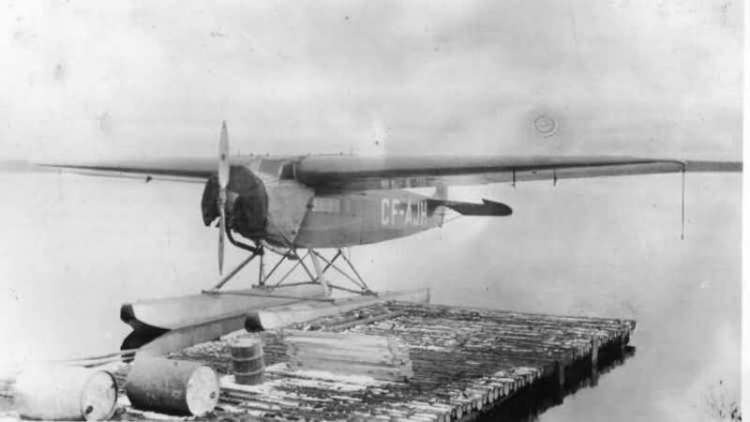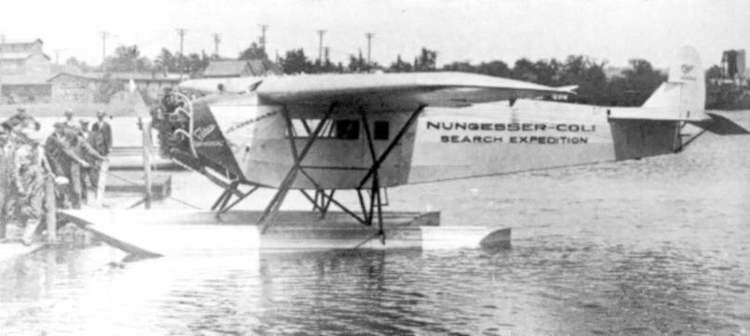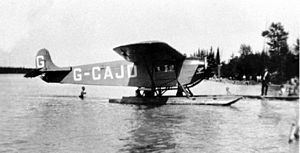Top speed 190 km/h Length 10 m Designer Robert B.C. Noorduyn | Wingspan 15 m Introduced 1926 | |
 | ||
Fokker universal model canada aviation and space museum
The Fokker Universal or "Standard" was the first aircraft built in the United States that was based on the designs of Dutch-born Anthony Fokker, who had designed aircraft for the Germans during World War I. About half of the 44 Universals that were built between 1926 and 1931 in the United States were used in Canada. Among the famous pilots who flew the Fokker Universal were Punch Dickins and Walter Gilbert.
Contents
- Fokker universal model canada aviation and space museum
- Robert pajas fokker universal uk indoor scale nationals 2016 flight 4
- Design and development
- Operational history
- Surviving aircraft
- Operators
- Specifications Fokker Universal
- References
Robert pajas fokker universal uk indoor scale nationals 2016 flight 4
Design and development
Anthony Fokker established the Atlantic Aircraft Corporation at the Teterboro Airport in Teterboro, New Jersey. One of his first ventures for the new company was building other aircraft under license. In 1926, he formulated plans to create an original aircraft designed for utility and air transport. The design was spearheaded by Robert Noorduyn and based on conventional Fokker designs. The mixed-material construction featured a welded steel tube frame for the fuselage and tail surfaces that were covered in fabric as well as a large wing constructed of wood with a wingspan of 14.55 m, mounted above the fuselage. Although the overall design was quite "clean," all cables, horns and attachments were mounted externally, adding considerably to the drag.

When the Fokker Universal was first developed in 1925, it had a 149 kW (200 hp) Wright J-4 or a 164 kW (220 hp) J-5 engine. Later models of the aircraft were powered by 246 kW (330 hp) J-6 engines. Two gasoline tanks were mounted in the wings near the forward edge. As typical of the era, the pilot sat in an open cockpit forward of the wing’s leading edge. The enclosed cabin below and to the rear of the pilot held four to six passengers or could be fitted for cargo hauling. Cargo capacity was estimated to be approximately 427 kg (940 lb); fuel capacity was 280 l (78 US gal) or 213 kg (468 lb)

They were sold new at the factory in 1927 for $14,200. At a time when Fokker America was mostly producing local versions of aircraft designed in the Netherlands, the Universal reversed this situation by becoming an American-designed aircraft produced by the parent company as the Fokker F.XI.
Operational history
Powered by the newly developed, air-cooled Pratt & Whitney radial engine which proved to be reliable, the Universal became widely regarded as a good choice for small air carriers and operators. The rugged utility aircraft proved it could haul cargo or passengers and its unique shock absorber system made of bungee cords enabled it to land on bumpy and uneven landing strips. Configurations could be readily changed from landplane to seaplane equipped with floats or if fitted with skis, the Universal could be used on rough ice and snow surfaces. An order for 12 Universals was placed by Western Canada Airways when its owner, James Armstrong Richardson, Sr. judged that the Standard Universal was the best available transport for use in the northern regions of Canada. Six more Universals (G-CAHE - CAHJ) were ordered by the Canadian Government for use in the Hudson Strait Expedition (1927–1928) to study ice formation and navigation in the Hudson Strait prior to the building of the port of Churchill, Manitoba.

While not specifically designed for long-distance flights, the Universal was suitable for pioneering work. Charles Lindbergh had wanted to fly a Universal on his transatlantic flight but officials at the Atlantic Aircraft Corporation who reviewed his request in 1926, thought that Lindbergh's plans were too risky. More concerned about the company's reputation rather than the pilot's well-being, they would not sell him an aircraft.

The Universal provided steady if unspectacular service with more than half of the Universals utilized for bush flying while more than a dozen United States, Canadian and foreign airlines flew it as a passenger/cargo transport. A further development, the Super Universal was larger and more refined with a fully enclosed cockpit. The follow-up design soon supplanted the Universal on the Atlantic Aircraft Corporation's production lines.
Universals continued to fly well into the 1930s but were primarily relegated to cargo work.
Surviving aircraft

Fokker Standard Universal G-CAJD is also known as "The Ghost of Charron Lake". It was lost in a snow storm on 10 December 1931. After a 30-year search for the rare bush plane, it was discovered in 2005. A Western Canada Aviation Museum search team (the Fokker Aircraft Recovery Team, F.A.R.T.), using sophisticated side scan sonar technology, finally located the aircraft literally "parked" on the lake bottom. In July 2006, the Ghost's engine was returned to Winnipeg, along with several artifacts. In October, the underwater archaeology team returned to the recovery site and towed the tail section to shallower waters. A further expedition was undertaken in 2007 to recover more of the Fokker for future display at the museum. Larger and smaller components are presently in storage at the Western Canada Aviation Museum. A decision as to restoration or conservation of the recovered material has not been made at present.
Operators
Specifications (Fokker Universal)
Data from
General characteristics
Performance
